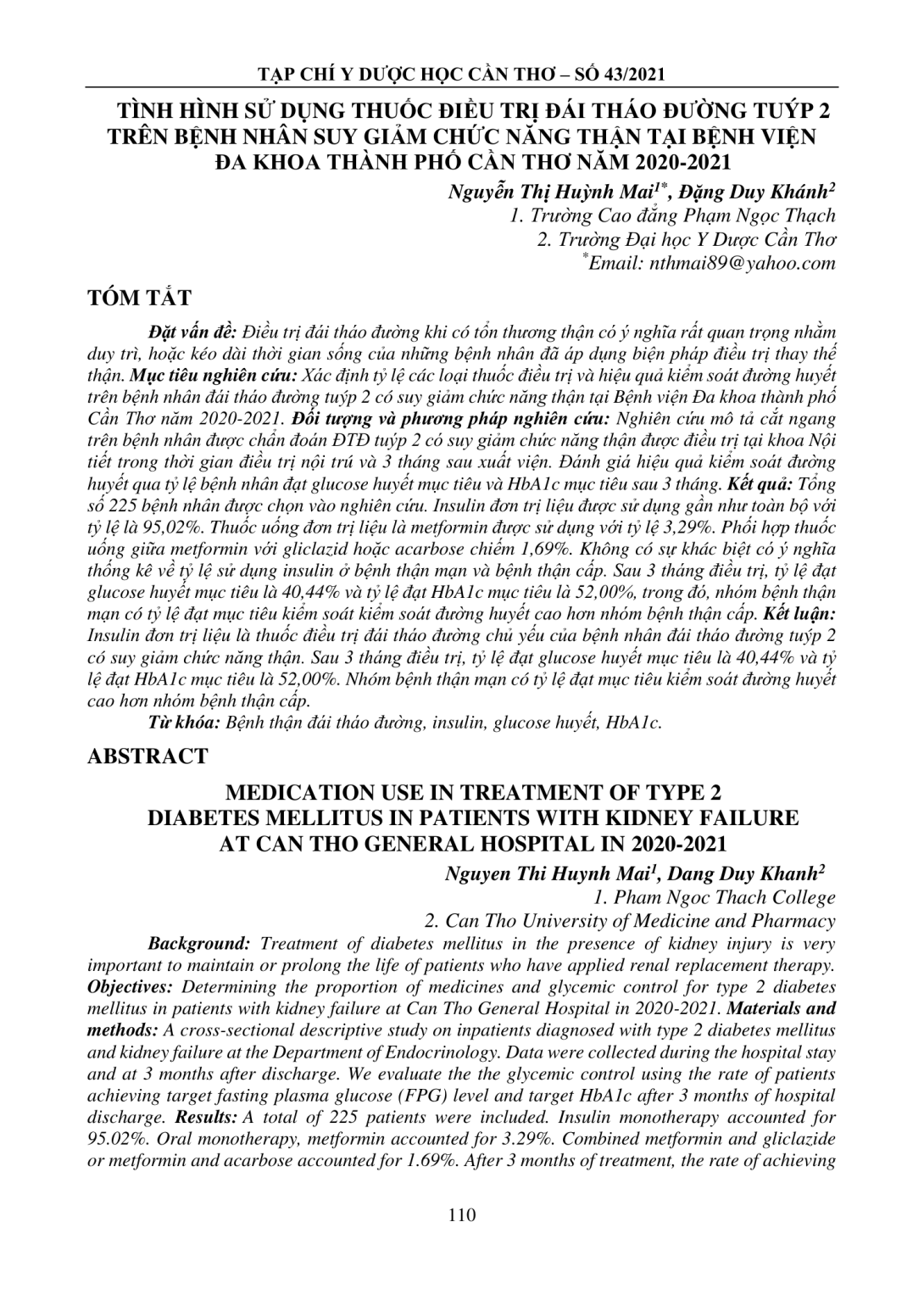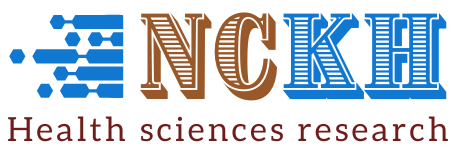
Điều trị đái tháo đường khi có tổn thương thận có ý nghĩa rất quan trọng nhằm duy trì, hoặc kéo dài thời gian sống của những bệnh nhân đã áp dụng biện pháp điều trị thay thế thận. Mục tiêu nghiên cứu: Xác định tỷ lệ các loại thuốc điều trị và hiệu quả kiểm soát đường huyết trên bệnh nhân đái tháo đường tuýp 2 có suy giảm chức năng thận tại Bệnh viện Đa khoa thành phố Cần Thơ năm 2020-2021. Đối tượng và phương pháp nghiên cứu: Nghiên cứu mô tả cắt ngang trên bệnh nhân được chẩn đoán ĐTĐ tuýp 2 có suy giảm chức năng thận được điều trị tại khoa Nội tiết trong thời gian điều trị nội trú và 3 tháng sau xuất viện. Đánh giá hiệu quả kiểm soát đường huyết qua tỷ lệ bệnh nhân đạt glucose huyết mục tiêu và HbA1c mục tiêu sau 3 tháng. Kết quả: Tổng số 225 bệnh nhân được chọn vào nghiên cứu. Insulin đơn trị liệu được sử dụng gần như toàn bộ với tỷ lệ là 95,02%. Thuốc uống đơn trị liệu là metformin được sử dụng với tỷ lệ 3,29%. Phối hợp thuốc uống giữa metformin với gliclazid hoặc acarbose chiếm 1,69%. Không có sự khác biệt có ý nghĩa thống kê về tỷ lệ sử dụng insulin ở bệnh thận mạn và bệnh thận cấp. Sau 3 tháng điều trị, tỷ lệ đạt glucose huyết mục tiêu là 40,44% và tỷ lệ đạt HbA1c mục tiêu là 52,00%, trong đó, nhóm bệnh thận mạn có tỷ lệ đạt mục tiêu kiểm soát kiểm soát đường huyết cao hơn nhóm bệnh thận cấp. Kết luận: Insulin đơn trị liệu là thuốc điều trị đái tháo đường chủ yếu của bệnh nhân đái tháo đường tuýp 2 có suy giảm chức năng thận. Sau 3 tháng điều trị, tỷ lệ đạt glucose huyết mục tiêu là 40,44% và tỷ lệ đạt HbA1c mục tiêu là 52,00%. Nhóm bệnh thận mạn có tỷ lệ đạt mục tiêu kiểm soát đường huyết cao hơn nhóm bệnh thận cấp.
Treatment of diabetes mellitus in the presence of kidney injury is very important to maintain or prolong the life of patients who have applied renal replacement therapy. Objectives: Determining the proportion of medicines and glycemic control for type 2 diabetes mellitus in patients with kidney failure at Can Tho General Hospital in 2020-2021. Materials and methods: A cross-sectional descriptive study on inpatients diagnosed with type 2 diabetes mellitus and kidney failure at the Department of Endocrinology. Data were collected during the hospital stay and at 3 months after discharge. We evaluate the the glycemic control using the rate of patients achieving target fasting plasma glucose (FPG) level and target HbA1c after 3 months of hospital discharge. Results: A total of 225 patients were included. Insulin monotherapy accounted for 95.02%. Oral monotherapy, metformin accounted for 3.29%. Combined metformin and gliclazide or metformin and acarbose accounted for 1.69%. After 3 months of treatment, the rate of achieving Treatment of diabetes mellitus in the presence of kidney injury is very important to maintain or prolong the life of patients who have applied renal replacement therapy. Objectives: Determining the proportion of medicines and glycemic control for type 2 diabetes mellitus in patients with kidney failure at Can Tho General Hospital in 2020-2021. Materials and methods: A cross-sectional descriptive study on inpatients diagnosed with type 2 diabetes mellitus and kidney failure at the Department of Endocrinology. Data were collected during the hospital stay and at 3 months after discharge. We evaluate the the glycemic control using the rate of patients achieving target fasting plasma glucose (FPG) level and target HbA1c after 3 months of hospital discharge. Results: A total of 225 patients were included. Insulin monotherapy accounted for 95.02%. Oral monotherapy, metformin accounted for 3.29%. Combined metformin and gliclazide or metformin and acarbose accounted for 1.69%. After 3 months of treatment, the rate of achieving
- Đăng nhập để gửi ý kiến
